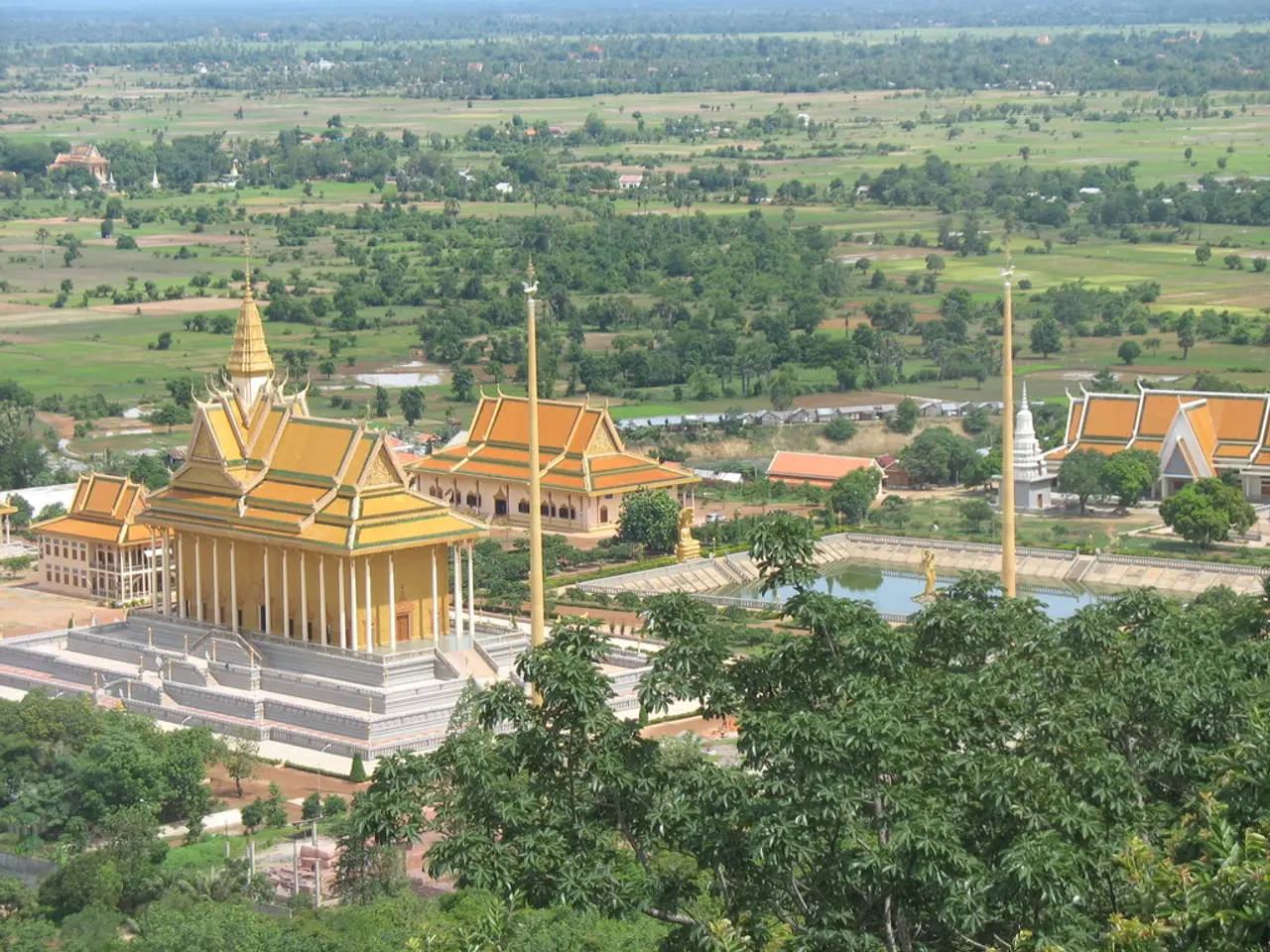Discovered: Ancient 1,800-Year-Old Roman Military Outpost in the Netherlands, Lying Outside the Roman Empire's Boundary
In a groundbreaking archaeological find, researchers have unearthed a 1,800-year-old Roman military camp in the Netherlands, extending the known limits of the Roman Empire's territory. The discovery, made in 2023 at the Hoog Buurlo site in the Veluwe region, was facilitated by the innovative use of lidar technology and predictive modeling.
Lidar technology, which involves firing laser pulses from an aircraft to map the landscape, revealed subtle variations in terrain that indicated the presence of ancient fortifications characteristic of Roman military camps. This technology allowed archaeologists to detect the "playing card-shaped" rectangular formations typical of Roman marching camps without extensive ground excavation.
Simultaneously, Jens Goeree, a master's student at Saxion University of Applied Sciences, developed a computer program that analysed lidar data to predict potential locations of Roman camps. This model efficiently pinpointed sites for archaeological investigation, streamlining the search process.
Together, lidar's precise detection of landscape features and predictive analytics to identify likely camp sites enabled researchers from Utrecht University and the "Constructing the Limes" project to locate the rare, temporary Roman camp at Hoog Buurlo. The site, approximately 15 miles north of the known Lower Germanic Limes frontier, offers a glimpse into the complex relationships between the Romans and indigenous tribes of the northern frontier.
The proximity of the Roman fort to these tribal territories suggests that the area was strategically important for the Romans, not only for military reasons but also for the control and management of local resources. The region north of the Lower Germanic Limes was inhabited by groups such as the Frisii and the Chamavi, who were in regular contact with the Roman Empire. Some Frisians even served in the Roman army, including as members of the emperor's bodyguard during Nero's reign.
This discovery challenges previous conceptions of the Roman border as a hard frontier and highlights the Romans' strategic presence and interactions with local tribes in the region. The existence of a Roman fort located beyond the Lower Germanic Limes suggests that the Romans did not view the Limes as a hard boundary but rather as a flexible zone of influence.
The findings at Hoog Buurlo add to the growing body of evidence that the Roman Empire's reach extended farther north than previously thought. The site spans 9 acres and features a V-shaped ditch, a 10-foot-wide earthen wall, and several entrances, typical of Roman military architecture.
This discovery raises questions about the true extent of Roman military activity beyond the empire's recognized borders and what this might mean for our understanding of Roman imperialism and frontier defense. As researchers continue to explore the Hoog Buurlo site and the surrounding region, we can expect to gain new insights into the ancient world's most powerful empire.
Artificial Intelligence, specifically a computer program developed by Jens Goeree, aided archaeologists by predicting potential locations of Roman camps using lidar data, streamlining the search process for hidden historical sites like the one at Hoog Buurlo. The connection between the advancements in technology such as lidar and AI, and archaeological discoveries, reveals that these technologies play a significant role in uncovering history and expanding our understanding of the past.




